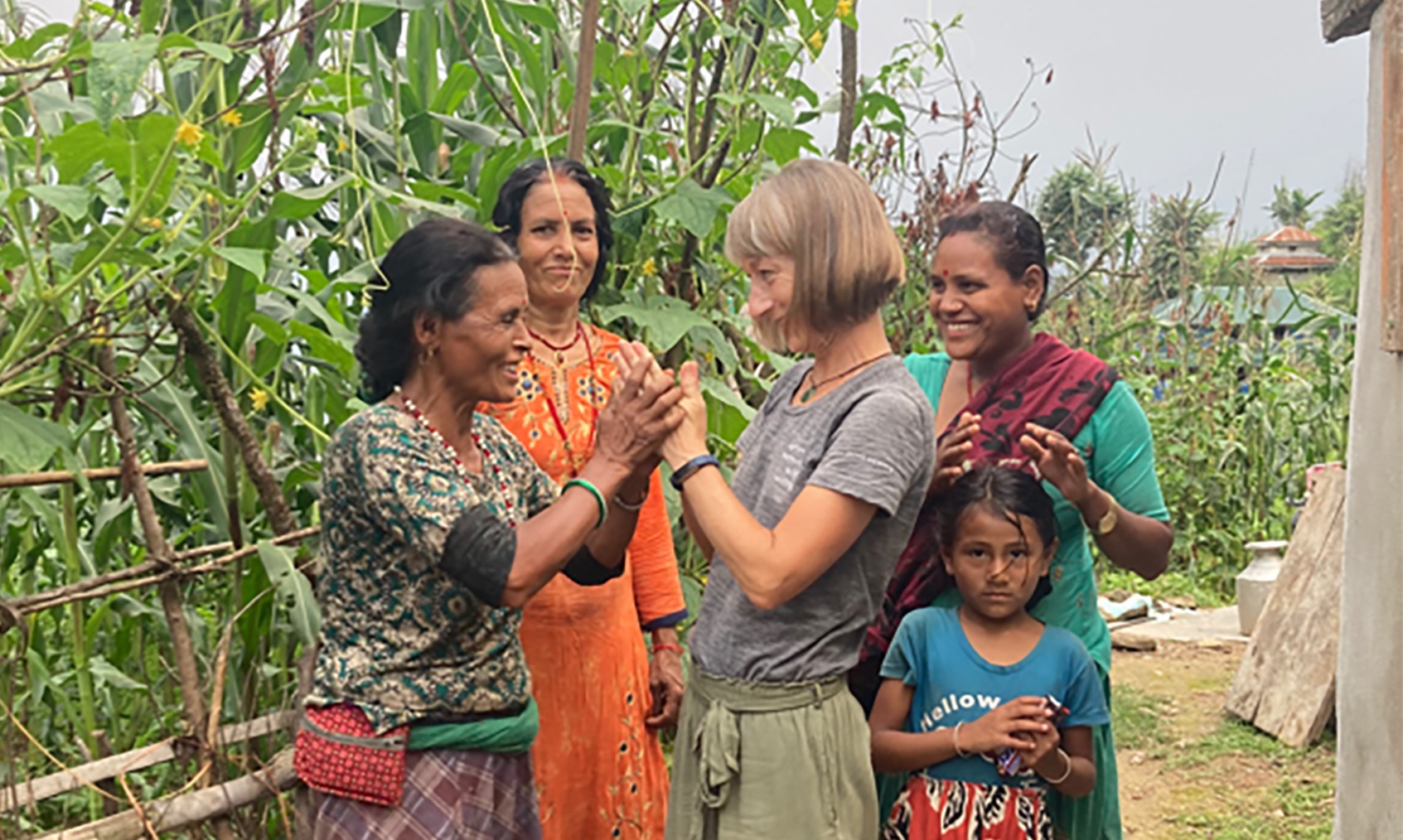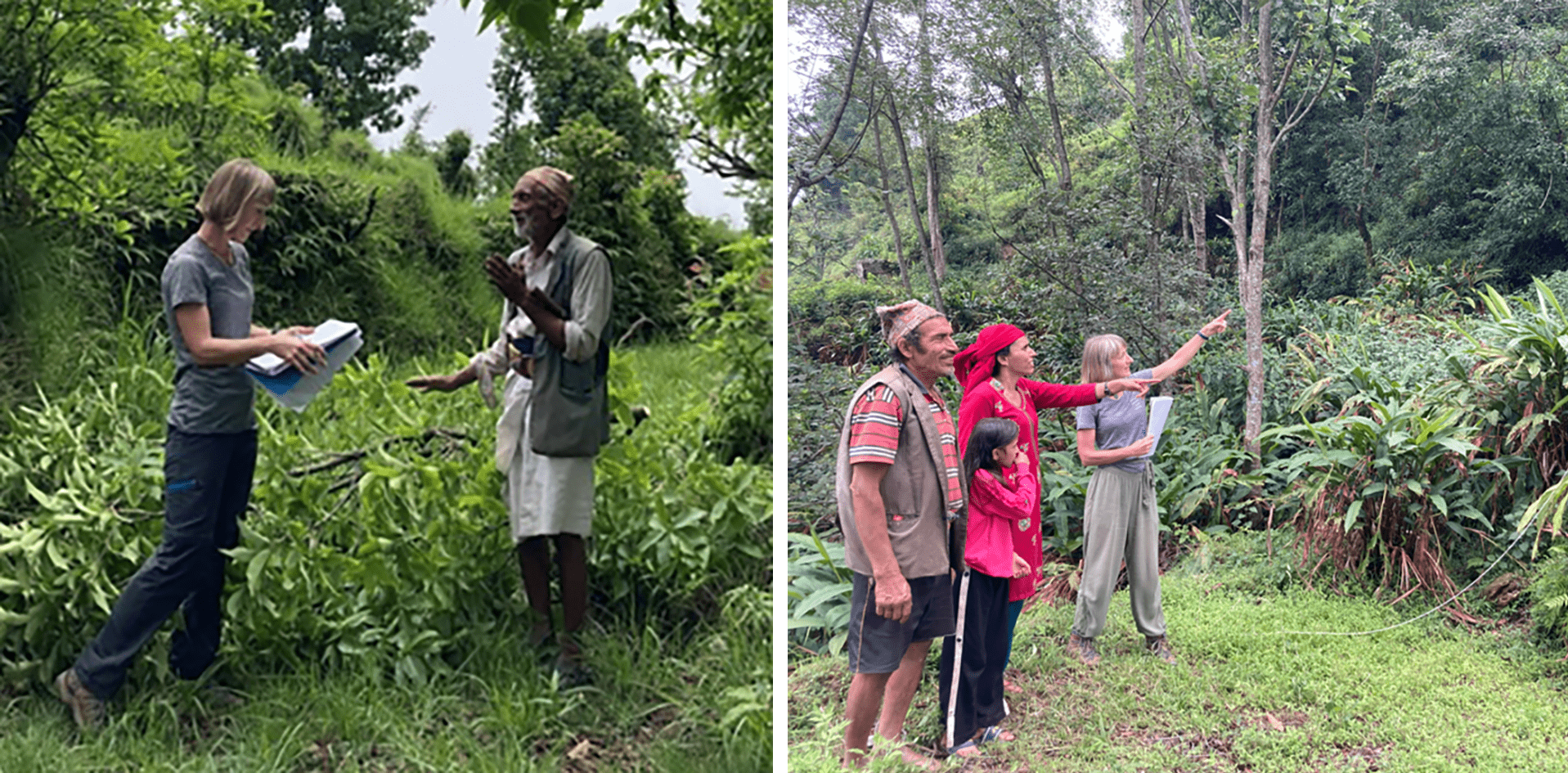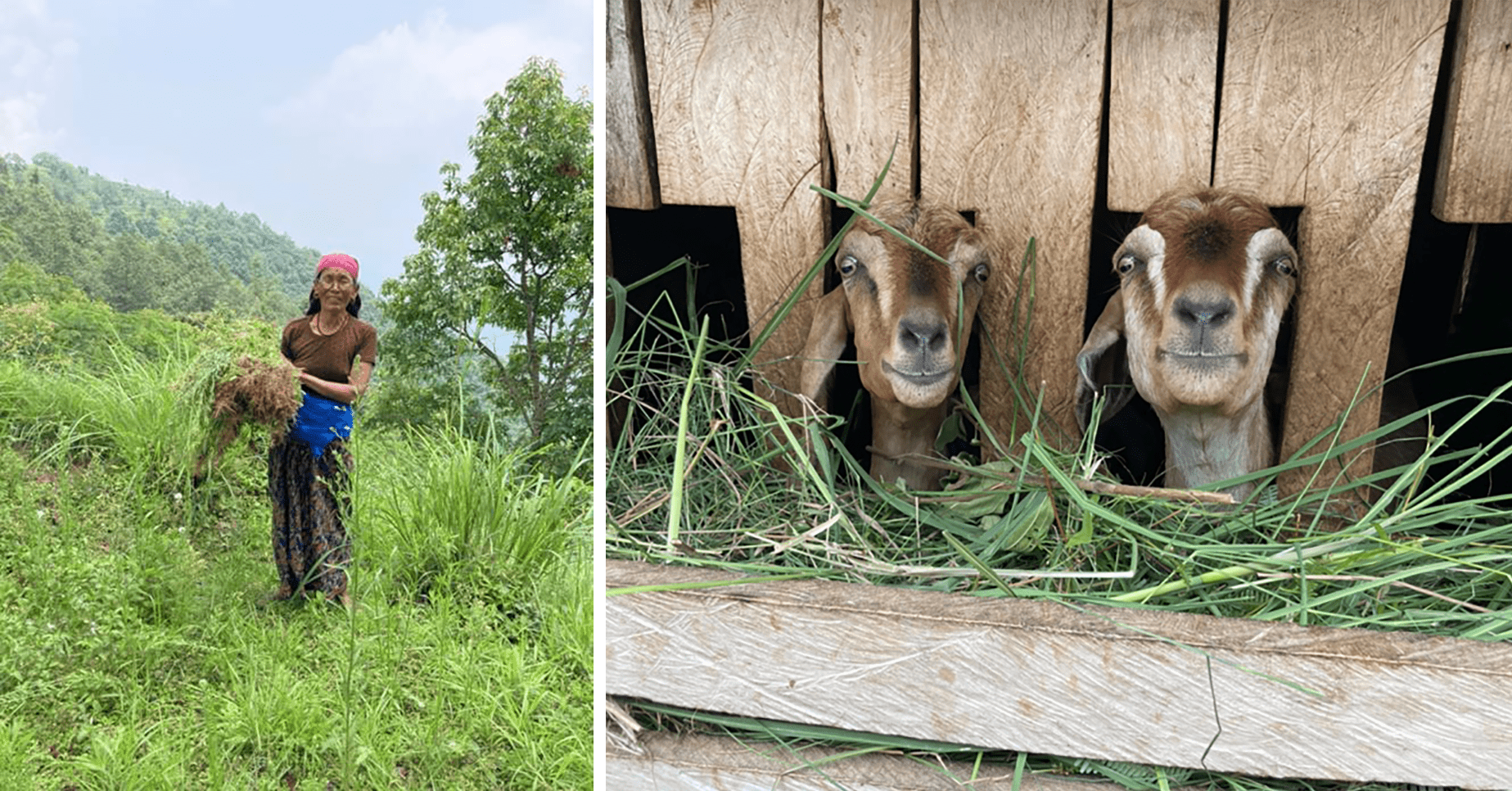

Improving rural livelihoods in Nepal
December 14, 2023

One way the Crawford Fund supports and encourages the next generation of Australians in study, careers and volunteering in international agricultural research is through our highly sought after Student Awards, funded by our State and Territory Committees and made possible by organisations including ACIAR, international centres, Australian and overseas universities and NGOs.
Please note applications for our 2024 Student Awards are now open!
In 2021, we announced 10 tertiary students had won awards to gain international agricultural research experience and expertise. The global pandemic caused considerable delays for this cohort, with some opting for ‘wraparound’ strategies to ensure the work was carried out without the planned travel, while others have since successfully travelled.
We would like to share the experience of Nicola McGunnigle a PhD Student from the University of Adelaide, who travelled to Nepal to undertake research into How restoring forests for sustainable development of underutilised and abandoned land in middle hills of Nepal might lead to positive impacts for rural livelihoods. The project is related to ACIAR work highlighted in an earlier Crawford Fund journalism award visit to Nepal by ABC TV Landline. We previously presented a taste of Nicola’s journey to Nepal when we featured her fantastic words and images on our Instagram platform while she was in the field living the Student Award experience.
“The primary objective of my PhD research is to assess how restoring forests on underutilised and abandoned land in middle hills of Nepal might lead to positive impacts for rural livelihoods,” said Nicola.
“In the middle hills of Nepal, up to 30% of cultivatable land has been left barren for a range of socioecological factors, primarily driven by out-migration. A consequence of agricultural land abandonment is the encroachment of forest species. Loss of agricultural land is seen as a threat to food security and livelihoods and these emerging private forests are yet to be fully realised for livelihood or alternative income benefits,” she said.
Nicola explained that the purpose of her field research was to assess farmer’s perceptions of the tree species that are naturally regenerating on former cultivated land and the potential opportunities from, and barriers to, a sustainable future under forestation. Furthermore, what barriers to a sustainable future from a forested landscape exist from policy measures and conflicting policy objectives?

Traditionally two thirds of Nepal’s population have subsisted on family-owned agricultural holdings. However, in the middle hills, productive cultivation of the land is challenged by the nature of small land holdings on steep slopes, marginal production quality, high costs and low to no profit and logistical difficulties to mechanise. With increasing shortage of labour and adequate irrigation, and an aging population, farmers are also facing increased wildlife conflict as the forest grows ever-closer to crops. The benefits of regeneration can be ascertained by assessing what is important to farmers that have abandoned agricultural land and their perceived constraints around change.
Due to Covid-19 travel restrictions, the first phase of the research project, a socioecological survey, was undertaken using the assistance of Nepali researchers coordinated from Australia. Three study areas were researched through 100 household surveys in each of Kaski, Tanahun and Gorkha districts in the middle hills of Nepal (a total of 300 surveys). Two thirds (66%) of survey respondents had experienced reforestation on their unused or underutilised agricultural land, with 80% of vegetation described as natural succession.
When travel opportunities re-opened, Nicola travelled to Nepal to follow up survey participants in the field. The field work comprised a mixed methods approach: “talk and walk interviews” to assess farmer’s perceived benefits of regenerating species on abandoned agricultural land and to look at what was actually growing on the land.
“The “talk and walk” methodology provided time for farmers to warm up and engage during the data collection. Farmers then took ownership of which land they chose to take us to and participate in interactive data collection. Spending time with the farmers provided a richer understanding of the social context, as well as the sheer challenge of farming on steep, marginal land parcels, and therefore the potential opportunities and barriers around any sustainable production from this land, whether this be agricultural or forest,” she said.
“Meeting the farmers in the field also allowed a further opportunity to gauge people’s attitudes and feelings around loss of agricultural land and gain of forest that can’t be measured on paper. The natural flow of conversation beyond the pre-determined questions also provided a fuller understanding of the context and the ability to ask additional questions. This provided a bigger picture to better understand the complex social and biophysical factors in land abandonment and the relationships between land, income and livelihoods,” Nicola said.

Nicola found that the reasons for land abandonment are often compounding. While labour shortage was cited as the most significant reason, this was exacerbated by old age, inadequate water supplies, economic restraints and biophysical limitations of the land in terms of access or mechanisation. With increasing forestation, wildlife is also an increasingly common problem, with agricultural crops near forests destroyed by monkeys, deer and porcupines. Some farmers had deliberately left land uncultivated to allow grass and fodder species regenerate for the purpose of cutting for livestock feed. Other farmers have planted low labour cash crops, such as cardamom, which flourishes in the shade of naturally regenerating native Utis.
In addition to the farmer meetings, interviews were carried out with a few key informants identified from land management and conservation sectors in government and NGOs to assess potential opportunities or barriers to landscape level natural regeneration. Findings from these meetings included:
- there is an overall opinion (both within and outside of government) that there is little coordination between and across sectors in terms of land management.
- Perceptions around future land utilisation of abandoned agricultural lands and sustainability of livelihoods from forest products was not consistent across the individuals interviewed, nor with farmer’s experiences.
- There was a consensus that with the local governments now having more authority and resources, that these could form an enabling environment for intervention and support for land- dependent livelihoods.
- Forest was generally viewed as a long-term livelihood investment, which could contribute to food security through alternative income generation and a capacity to purchase food.
- Forests were viewed as synonymous with balanced ecosystems and richer biodiversity, also contributing to land stability, improved water functions and climate change mitigation through carbon sequestration.
“To fulfil the research objective, more research is needed to better understand through farmer’s perceptions the potential benefits of species that are regenerating and whether indirect benefits are sufficient for sustainable livelihood outcomes if benefits are not perceived or exploited directly,” said Nicola.
“The supervising researchers are currently invested in the University of Adelaide based EnLiFT2 project (https://enliftnepal.org/), in partnership with Forest Action Nepal and supported by ACIAR, to advance silviculture trials to assess the values of improved productivity and income from community and private forests,” she explained.
“My additional research on naturally regenerating forests can similarly contribute to practical development of appropriate governance arrangements based on changing forestation and demands for forest products outside of community forests. Research has been undertaken in collaboration with staff at Kathmandu Forestry College, including appointment of field enumerators in Phase 1 and field assistants in Phase 2. The collaboration has built partnership for ongoing research opportunities and has helped develop social and scientific research skills for seven young Nepali science graduates through their experiences in participating,” she concluded.




